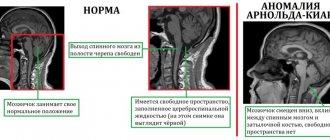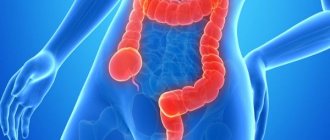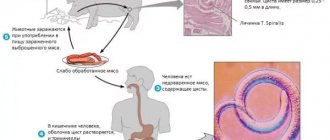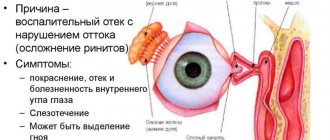One of the most common diseases in people who need surgery is inflammation of appendicitis.
The atrophied part of the large intestine is the appendix; it looks like a vermiform appendix of the cecum. The appendix forms between the large and small intestines.
The causes of this pathology are usually attributed to the occurrence of worms and the development of parasites, but it is impossible to say for sure what actually causes inflammation of the appendix.
Doctors note that it is quite difficult to predict and prevent the disease. Experts do not recommend taking painkillers in case of appendicitis.
The appointment will prevent the doctor from making a correct diagnosis of the patient. This should be done exclusively by a specialist who will prescribe an ultrasound.
Thanks to them, it will be possible to understand what shape the inflamed appendix has. It may be clogged or swollen. It can only be removed surgically.
What is appendicitis
This disease is common in adults and children. It can appear at any age and has a different course. This is what makes it difficult to diagnose.
Appendicitis is the result of an inflammatory process in the tissues of the cecum. It is characterized by severe or relatively dull pain in a person's lower right abdomen, nausea, vomiting and other symptoms. Refusal of treatment can lead to the most severe outcome, so the patient must consult a specialist.
Causes of inflammation of the appendix
To properly treat the disease, the doctor must determine the cause of the inflammation. Research is still being conducted to help specialists understand the development of the disease. But according to statistics, the likelihood of developing appendicitis becomes greater if a person eats a lot of protein foods.
- Blockage of the intestinal lumen is the most common cause of appendicitis. When bacteria that live in the intestinal lumen enter its mucosa, inflammation begins. A number of specific factors contribute to this.
- Poor circulation. It causes blood clots and blockages in the blood vessels that supply blood to the intestines. As a result, its walls do not receive the oxygen they need and begin to become inflamed.
- Presence of fecal stones. They can form if a person is prone to eating protein foods. He definitely needs to introduce plant-based dietary fiber into his diet, which helps the intestinal walls move feces through it.
- Constipation. Some people may have a problem with bowel movements. If they suffer from frequent constipation and bloating, stool turns into tissue. Then they become the cause of blockage.
There is also an opinion that the appendix is an integral part of the human immune system. It is responsible for the same functions that are inherent in the tonsils. Moreover, when many infections pass through the intestines, it begins to become inflamed.
What are the forms of appendicitis?
This disease is usually distinguished depending on the causes of its development and the nature of its course. The diagnosis is made based on examinations, observation of the patient and his general condition.
Forms of appendicitis:
- Spicy. In a sick person, inflammation begins to quickly develop, which simply will not go away. All forms of acute appendicitis are treated only by appendectomy. That is, the person is immediately scheduled for surgery, during which surgeons remove the inflamed intestine.
- Chronic. This is a kind of rather severe complication after untreated acute appendicitis. In some cases, the pain of acute appendicitis may be silent and pass quickly. Then it subsides completely, and the inflammation becomes chronic. As a result, appendicitis can cause even more complications at any time.
The most common complications after appendicitis
Of course, doctors set themselves the task of eliminating all complications after appendicitis removal, but sometimes they simply cannot be avoided.
Below are the most common consequences of appendicitis.
Perforation of the walls of the appendix
In this case, there are ruptures in the walls of the appendix. Its contents will end up in the abdominal cavity, and this provokes sepsis of other organs.
The infection can be quite severe. A fatal end is not ruled out. Such perforation of the walls of appendicitis is observed in 8-10% of patients.
If it is purulent peritonitis, the risk of death is high, and exacerbation of symptoms cannot be ruled out. This complication after appendicitis occurs in 1% of patients.
Appendiceal infiltrate
These complications after surgery to remove appendicitis are observed in the case of adhesions of organs. The percentage of such cases is 3-5.
The development of complications begins 3-5 days after the formation of the disease. Accompanied by pain of unclear localization.
Over time, the pain subsides, and the contours of the inflamed area appear in the abdominal cavity.
The infiltrate with inflammation acquires pronounced boundaries and a dense structure, and tension in nearby muscles will also be observed.
In about 2 weeks the swelling will go away and the pain will stop. The temperature will also subside, and blood counts will return to normal.
In many cases, it is possible that the inflamed part after appendicitis will cause the development of an abscess. It will be discussed below.
Abscess
The disease develops against the background of suppuration of the appendiceal infiltrate or surgery if peritonitis is diagnosed.
As a rule, it takes 8-12 days for the disease to develop. All abscesses need to be covered and debrided.
In order to improve the outflow of pus, doctors install drainage. During the treatment of complications after appendicitis, it is customary to use antibacterial drug therapy.
If there is a similar complication after appendicitis, urgent surgery is necessary.
After this, the patient will have to wait for a long rehabilitation period, accompanied by drug treatment.
Acute catarrhal
Basically, with such inflammation, surgeons observe a standard clinical picture. But atypical forms of acute appendicitis can vary greatly. In addition, they are difficult to identify simply by symptoms. The correct diagnosis can be made only by visual examination of the intestine.
Thus, a patient with acute appendicitis is first observed. Be sure to evaluate his condition and the nature of the pain. If necessary, an operation is immediately prescribed, during which the appendix is examined.
Pathological forms of acute appendicitis have the following symptoms:
- pain in the right side of the abdomen, in some cases they can move to other places;
- sharp pain when walking or jumping;
- nausea and vomiting;
- the appearance of dry mouth;
- heat;
- abdominal tension, swelling.
When the doctor palpates, the person complains of increased pain. On the appendix itself, layers are possible, and swelling of the blood vessels is clearly visible.
Postoperative complications
Surgery is a surgical intervention in medicine, in which there have been and will be complications. But their outcome depends on the patient’s early seeking of medical help. They can occur both during and after surgery.
In the postoperative period, complications from the operated wound may occur:
- Hematoma.
- Every fifth patient has suppuration at the incision site.
- Fistula.
- Bleeding.
Pylephlebitis
This is an acute, purulent inflammatory disease of the portal vein, accompanied by thrombosis. Secondary pathology that occurs as a complication of acute, especially advanced appendicitis. It can be recognized by ultrasound or x-ray diagnostic studies.
Symptoms:
- Fluctuations in body temperature with chills;
- Frequent pulse;
- Soft belly;
- Enlarged liver on palpation;
- Labored breathing;
- Increasing anemia;
- Increase in ESR.
In case of pylephlebitis, renal and liver failure is prevented. An operation will be performed to ligate the thrombosed vein located above the thrombosis to prevent the blood clot from moving towards the liver. This disease leads to death. It consists of inflammation of the portal vein, which accompanies and expands liver abscesses.
Clinical symptoms of pylephlebitis:
- Sudden temperature fluctuations;
- Chills;
- Skin with a yellow tint;
- Frequent pulse.
Perforated
The most dangerous form of this disease. It occurs in case of acute inflammation of the intestine and occurs quite quickly. The disease is characterized by the formation of various holes in the walls of the intestine. From these, microbes, pathogenic bacteria and the entire contents of the appendix begin to enter the patient’s peritoneum.
As a result, a person develops peritonitis. He begins to experience sharp, unbearable pain in his right side, his temperature rises critically, and nausea and vomiting are possible. Unfortunately, with this form of the disease the patient cannot always be saved.
Diagnostic methods
During diagnosis, palpation is performed. In this case, pain is detected in all parts of the abdomen. Great discomfort occurs when pressing on the right iliac region. When percussion (tapping) of the abdominal wall is performed, the patient feels a sharp pain. Sometimes in some places the doctor hears a dull sound. This occurs due to the accumulation of fluid. When the abdomen is listened to, peristaltic sounds are heard.
A rectal examination can help detect discomfort in the anterior wall of the rectum. Pregnant women and women undergo vaginal examination. In this case, an overhang of the posterior vaginal fornix is detected. During peritonitis, pain occurs when the cervix is stretched.
If peritonitis occurs due to a rupture of the inflamed appendage of the cecum during acute appendicitis, then the process is characterized by a severe manifestation. In this case, the disease proceeds for more than 12 hours until the wall of the appendix perforates. In medicine, this process is called appendicular or loose infiltrate, which abscesses into the subcutaneous tissue. Often patients seek help from a doctor when the abscess opens into the abdominal cavity.
When diagnosing this complication, signs of systemic response syndrome to inflammation are identified, which manifests itself:
- severe metabolic disorders;
- persistent hypotension;
- increasing shortness of breath;
- oliguria;
- CNS disorders.
To detect peritonitis, an X-ray examination of the abdomen is performed. In this case, a symptom of paralytic obstruction is detected. Thickening of the wall of the small intestine occurs. The image shows the relief of the mucous epithelium.
Laboratory tests include ultrasound diagnostics of the intestines and abdominal cavity. The wall of the small intestine thickens. This occurs due to infiltration. Peristaltic function is impaired or activity is reduced. With peritonitis, movement of intestinal contents is observed. This is observed in conjunction with the patient’s breathing.
Gangrenous
This disease can lead to irreversible consequences. The gangrenous form of appendicitis occurs in the case of untreated atypical inflammation of the intestine. As a result of complete defeat of the process, its cells die. This completely removes the pain, but the inflammation itself continues to develop.
The disease spreads throughout the abdominal cavity and has all the symptoms of peritonitis. A person may have the following symptoms:
- poor heart rhythm;
- constant loss of strength;
- cold sweat.
There is also clearly visible inflammation of the peritoneum, high temperature and soreness in the area where the appendix is located. If you do not see a doctor in time, in just a few hours the disease can become irreversible.
It is very life-threatening.
Features of the disease
No one is immune from peritonitis. The best way to prevent it is to consult a doctor in a timely manner when the first pain symptoms appear, which can be localized in the abdominal area. Peritonitis is always secondary. The cause of inflammation of the abdominal cavity can be appendicitis or a number of other pathological conditions.
People who have already suffered from this disease and have been operated on should take more care of themselves. The risk of developing re-inflammation under certain circumstances is quite high.
Phlegmonous
Among all types of appendicitis, phlegmonous is one of the most severe. Inflammation spreads to the entire appendix and is characterized by the appearance of pus and ulcers on the walls of the intestine. They can burst at any time, infecting the organs in the peritoneum.
In this form, all the symptoms of the disease intensify. In particular, a person experiences severe pain and his body temperature rises. When palpating the abdomen, the doctor clearly feels the swollen appendage.
Another striking symptom is a coated, dry tongue. Swelling of the lower abdomen is also observed. The patient is in pain in any position. The only thing that can help here is urgent surgical removal of the entire process followed by examination of the patient.
If infection of other organs has already occurred, therapy is prescribed.
Treatment
The consequences of peritonitis with appendicitis threaten the patient’s life, so timely assistance is required.
A patient with inflammation of the peritoneum is prescribed surgery to remove the source of inflammation (in appendicitis, the appendix). When the appendage is removed, the abdominal cavity is washed with an antiseptic to prevent further spread of infections.
In addition, doctors perform peritoneal dialysis: a solution is injected into the peritoneal cavity and left for 4-12 hours. After this, the liquid, along with metabolic and decay products, is removed. The abdominal cavity is drained and the wound is sutured. The dressing on the postoperative wound is changed regularly.
For appendicitis with peritonitis in the postoperative period, the patient is prescribed antibiotics, diuretics, and nonsteroidal anti-inflammatory drugs. The patient needs to follow a diet and drink a lot of pure water.
Doctors' opinion
Every person knows that inflammation of the appendix is dangerous. But some are ready to endure and endure the pain within themselves. According to doctors, this is the most dangerous, since you can lose precious time to save the patient’s life.
A doctor can make a correct diagnosis only if he observes the entire clinical picture. To do this, he interviews the patient, palpates his abdomen and, at the slightest suspicion, admits him to the hospital. There the patient will be monitored, which will allow the necessary measures to be taken immediately.
Experts insist that the only correct treatment for appendicitis is surgery. The method of performing the operation is selected depending on the nature and type of the disease.
People who feel sharp pain in the lower abdomen, deterioration of their condition and other symptoms should immediately seek help.
Under no circumstances should you take painkillers, which will blur the whole picture. Only after consultation with a specialist can certain treatment be started.
Types of peritonitis
According to the criterion of the spread of the pathological process, local and diffuse (spread) peritonitis are distinguished.
Local peritonitis in appendicitis is inflammation limited to a specific area, which develops only in one anatomical part of the abdominal cavity. This form is much easier than the diffuse form: sometimes the patient remains able to work. The mortality rate for local inflammation of the peritoneum is 4-6%.
Diffuse peritonitis is accompanied by inflammation of several parts of the abdominal cavity, covering 2-6 or more. The consequences of peritonitis after appendicitis in this case are extremely dangerous: mortality reaches 45%.
Stages of development
Inflammation of the peritoneum develops in 3 stages.
| Stage | Development | Peculiarities |
| Reactive | Continues in the first 12-24 hours after the onset of the inflammatory process | Swelling of the peritoneum occurs |
| Toxic | The stage develops over the next 24-72 hours and is accompanied by toxic damage to the peritoneum | During this period, toxins penetrate from the affected area into the blood and begin to circulate throughout the body. |
| Terminal | Nerve endings in the abdominal cavity atrophy, which relieves pain | The patient is in serious condition, there is no reaction to external stimuli (sound, light, touch). At this stage, septic shock occurs |
Each stage of the development of peritonitis is accompanied by a characteristic clinical picture.
Results
The variety of types and varieties of appendicitis indicates that it can occur in completely different ways. Although this fact can complicate the diagnosis, the doctor, with proper examination of the patient, will be able to give him the correct diagnosis. In addition, regardless of the type of disease, it requires urgent surgical treatment, and in some cases additional therapy.
See
What causes appendicitis How to determine appendicitis in a person How appendicitis begins to hurt Inflammation of appendicitis symptoms in adults











